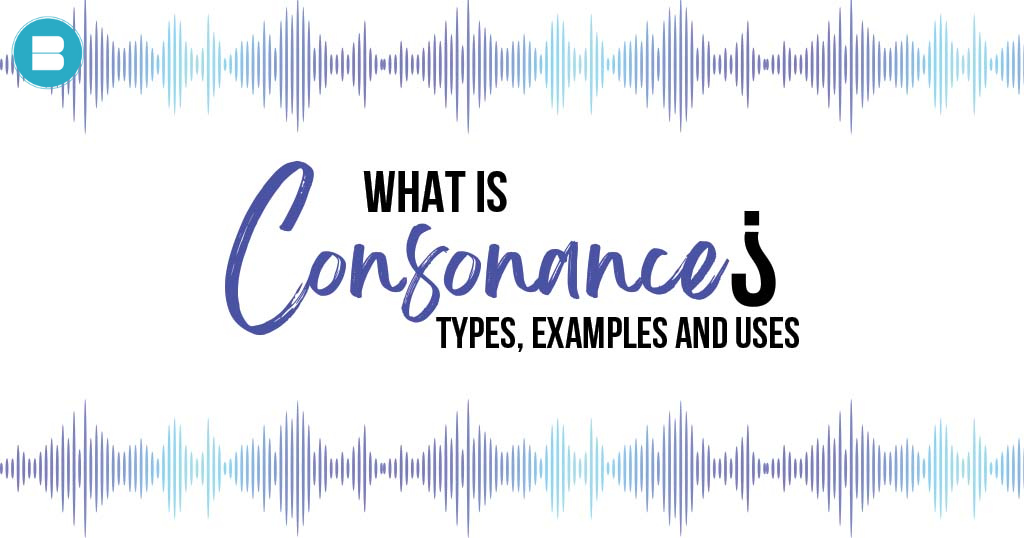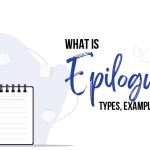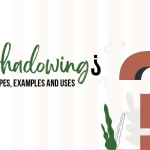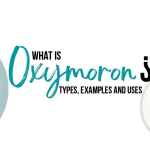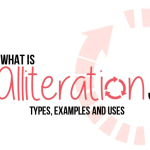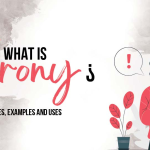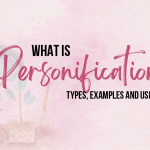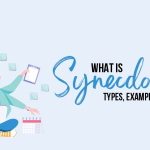Many people have a doubt “What is Consonance“? Consonance is a literary magic trick, where words and sounds play together like a symphony. It’s the repetition of similar consonant sounds that creates a harmony that can be heard but not seen. It’s the “s” in “slip and slide” or the “h” in “hissing snakes” that make the words sing together.
It’s not just the letters but the sounds they make that come together to create a symphony of words.
Read: Learn what is Parallelism? Definition, Types, Uses, & Examples.
Consonance is a secret weapon of poets, a way to make words dance and sing. It’s the repetition of like-sounding consonants that creates a musicality within a line of poetry.
It’s a way to add depth and meaning to words, and to create a harmony that is pleasing to the ear.
Poets use this device like a master composer, conducting a symphony of sounds to create an artistic language that resonates with readers and listeners alike.
It’s a subtle yet powerful tool, that adds an extra layer of beauty to poetry, making it an experience for the senses.
Simply stating, Consonance is a literary device that involves the repetition of similar consonant sounds, typically in close proximity to one another. This repetition can occur at the beginning, middle, or end of words, and it creates a sense of harmony and unity in the language.
Read: Here’s a list of most interesting books of all time for Young adults.
It can be used to create a specific mood or atmosphere in a piece of writing, and it can also be used to add emphasis or to create a sense of rhythm.
Types of Consonance
There are several types of consonance that can be used in literature, including:
- Alliteration: This is the repetition of the initial consonant sound in a group of words. For example, “Peter Piper picked a peck of pickled peppers.”
- Consonant clusters: This is the repetition of multiple consonant sounds together in a group of words. For example, “black back”
- Reverse consonance: This is the repetition of the final consonant sound in a group of words. For example, “hissing snakes.”
- Internal consonance: This is the repetition of consonant sounds within the body of a word. For example, “buzzing”
- Consonant rhyme: This is the repetition of consonant sounds at the end of words that rhyme. For example, “cat” and “rat”
These are the main types of consonance, but there are many variations and combinations that can be used in literature.
It is basically a repetition of the first letter sound therefore Consonance can often be confused with Alliteration and Assonance. So to make sure you don’t get confused, here is a brief difference between the three:
As you already know till now what Consonance is, Alliteration is a type of consonance in which the initial consonant sound is repeated in a group of words. This repetition is often used for emphasis or to create a sense of rhythm. Alliteration can be used to draw attention to specific words or to create a sense of playful language.
For example, “Peter Piper picked a peck of pickled peppers” – the repetition of the ‘p’ sound.
“She sells sea shells by the sea shore” – the repetition of the ‘s’ sound
Assonance involves the repetition of similar vowel sounds, typically in close proximity to one another. Like consonance, it creates a sense of harmony and unity in the language and can also be used for emphasis and rhythm. Assonance can be used to create a sense of internal rhyme within a line of poetry or to create a specific sound pattern.
For example, “grey day” – the repetition of the ‘e’ sound
“How now brown cow” – the repetition of the ‘o’ sound
“Fledgling feather” – the repetition of the ‘e’ sound
It is obvious from these examples that consonance and assonance are two distinct sorts of literary devices employed to create a sense of harmony and wholeness in the language. Alliteration is also a sort of consonance.
It’s important to note that these literary devices can overlap and can be used in combination with each other to achieve different effects.
For example, alliteration can be used in conjunction with assonance to create a sense of internal rhyme and emphasis.
So, Consonance is the repetition of similar consonant sounds, Alliteration is the repetition of the initial consonant sound and Assonance is the repetition of similar vowel sounds.
Some examples from novels that will help you to observe consonance:
- “The Grapes of Wrath” by John Steinbeck – “The roads were white in the glare, the land was dry and dead.” – The repetition of the ‘d’ sound in “white,” “glare,” “dry,” “dead” creates a sense of unity and harmony.
- “The Picture of Dorian Gray” by Oscar Wilde – “The leaves of the trees rustled in the wind like living things.” – The repetition of the ‘s’ sound in “leaves,” “rustled,” “trees,” “like,” and “things” creates a sense of unity and harmony.
- “The Strange Case of Dr. Jekyll and Mr. Hyde” by Robert Louis Stevenson – “The door opened with a bright flash, as if a blaze of light came out.” – The repetition of the ‘s’ sound in “flash,” “as” and “blaze” creates a sense of unity and harmony.
- “The Handmaid’s Tale” by Margaret Atwood – “The red robes swirled as they walked, and the black boots gleamed.” – The repetition of the ‘s’ sound in “swirled” and “walked” and the ‘k’ sound in “black” and “gleamed” creates a sense of unity and harmony.
- “Midnight’s Children” by Salman Rushdie – “The streets were full of people, and the bazaars were full of noise.” – The repetition of the ‘l’ sound in “full” and “full” and the ‘s’ sound in “streets” and “people” creates a sense of unity and harmony.
- The White Tiger” by Aravind Adiga – “He was a man with a past, a man with a story, a man with a secret.” – The repetition of the ‘m’ sound in “man,” “past,” “story,” “man,” and “secret” creates a sense of unity and harmony.
- “The Guide” by R.K. Narayan – “The road was long and winding, and the trees were tall and dark.” – The repetition of the ‘l’ sound in “long” and “winding” and the ‘t’ sound in “trees” and “tall” creates a sense of unity and harmony.
- “The Inheritance of Loss” by Kiran Desai – “The sky was a deep blue, and the clouds were white and fluffy.” – The repetition of the ‘s’ sound in “sky” and “deep,” and the ‘f’ sound in “clouds” and “fluffy” creates a sense of unity and harmony.
- “The Immortals of Meluha” by Amish Tripathi – “The air was thick with the scent of incense and the sound of prayers.” – The repetition of the ‘s’ sound in “scent” and “incense” and the ‘d’ sound in “sound” and “prayers” creates a sense of unity and harmony.
- “The Ministry of Utmost Happiness” by Arundhati Roy – “The sky was dark, and the stars were bright.” – The repetition of the ‘k’ sound in “sky” and “dark” and the ‘t’ sound in “stars” and “bright” creates a sense of unity and harmony.
These examples show that any type of literature is rich with the use of literary devices such as consonance, which may be found throughout the text, not just in conversation or monologue, and can assist to create a feeling of balance, oneness, and prominence.
In conclusion, Consonance is the symphony of words, where sounds and letters come together in harmony to create a musicality that echoes in the mind of the reader.
So next time you read a poem, pay attention to the subtle yet powerful Consonance that lies within the lines, let it transport you to a world of beauty and wonder.
Happy Reading!

